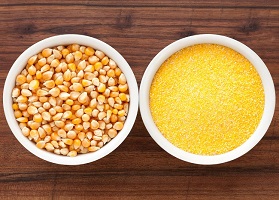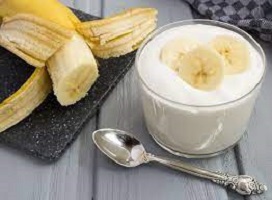How to Make Cornstarch at Home
How to Make Cornstarch at Home

Corn starch is also known as corn or maize starch, and it has various uses in the kitchen.
Santa Claus isn’t real. Neither is Harry Potter, the Tooth Fairy, or white pants. But there is still some magic in this world: cornstarch.
What is cornstarch incapable of? It not only provides crispiness in a variety of dishes, from baked chicken wings to deep-fried chicken thighs to sautéed shrimp to pan-fried cubed tofu, but it also makes cakes and cookies tender and soft.
Related Articles >>>
- Corn Flour Vs Cornmeal Differences: How Do They Compare?
- Benefits of Guinea Corn (Sorghum) for Adult & Babies | Effects
- How To Prepare Caramelized Corn Drink Asaana And Sobolo
Talk about being able to work on both sides of the aisle.
How to Make Cornstarch with Flour
But that isn’t all. Cornstarch aids in the browning of thinly sliced protein such as beef or pork without overcooking while also turning the liquidy soy, rice wine vinegar, and mirin into a veg-coating sauce.
Cornstarch makes a gravy that pools in, rather than drips down, mashed potatoes; it binds runny fruit fillings into juicy-but-sliceable pie slices.
It gives otherwise thin soups body (like a hair volumizer for your broth!); and it is the magical thickener in many spicy, creamy soups.
Corn flour can vary in color depending on the type of corn processed; some are yellow, while others are white.
What is cornstarch?
Cornstarch, as opposed to corn flour, which is made from whole kernels, is made from the endosperm found in the center of the corn kernel.
The endosperm starches are extracted, rinsed, dried, and milled into a fine powder.
This leaves us with cornstarch, a white, chalky powder with numerous culinary applications. It is most commonly used as a sauce and stew thickener.
Corn flour is a versatile ingredient that can be used as a batter in baked goods and as a binder in processed meats.
While cornstarch is widely used in baking, it is not a healthy option for the majority of people.
It is high in calories and low in essential nutrients such as protein, fiber, and vitamins.
A high-refined carbohydrate diet can cause high blood sugar, obesity, and even type 2 diabetes.
Before making any changes, it’s critical to understand the benefits and drawbacks of cornstarch in cooking and baking.
Related Articles >>>
- Sadza Food (African Cornmeal): How to Make Ugali
- Corn Pap: Health Benefits and Easy Preparation Methods
- What Is Pozole? How to Make Authentic Mexican Corn Soup
- Cornmeal Porridge | Corn for Baby | Kids Friendly Meal
Don’t be concerned about the health risks of raw cornstarch. While cornstarch is generally safe to consume, there are some precautions to take.
If cornstarch is not cooked, it can contain harmful bacteria. When preparing a dish, ensure that the cornstarch is slurry.
You will avoid the risk of food-borne illness this way.
How to make starch powder at home
Corn flour is known in the United Kingdom, while Cornflour is known in the United States.
You should also be aware that the time it takes for the corn to soften varies; depending on how fresh your corn is, it could take a few hours or an entire day.
Semi-dried corn absorbs water and softens more quickly, whereas dryer corn takes longer.
Finally, the process of producing corn flour or cornstarch is very similar to that of producing cold-pressed coconut oil or Akamu.
If you’re making a large batch of cornstarch, you can take the corn to a commercial milling machine to avoid overworking your blender.
The same process that is used to make yellow corn flour is used to make white corn flour; the only difference is the slight color variation.
How does Cornstarch Work?
Cornstarch molecules act like tiny sponges. They absorb water and expand as a result. The same is true for any starch. When rice, oatmeal, or polenta are simmered, they thicken and expand in volume.
How to Use Cornstarch as a Thickener
Cornstarch adds a gleaming sheen to the liquids it thickens, as a result, it is more commonly used in sweet sauces and pie fillings than in savory sauces and gravies.
Nonetheless, it performs admirably and is simple to use:
- Start with 1 tablespoon of cornstarch in a small bowl for each cup of liquid you want to thicken. Stir in an equal amount of cold liquid until smooth paste forms.
This is your slurry number two. Incorporate the slurry into the hot, simmering liquid you want to thicken.
Bring to a boil and continue to cook until any starchy taste is gone. Cooking for any longer will cause the starch to break down and the liquid to thin out again.
Cornstarch Applications: Uses of Cornstarch
- Thickening power – Cornstarch thickens twice as well as flour.
To thicken gravy, sauce, soup, or stew, use half as much cornstarch as flour.
To thicken hot liquids, first, combine cornstarch and a small amount of cold water until smooth.
Stir gradually into the hot liquid until combined. Bring to a boil, stirring constantly, and cook for one minute.
- Used in the baking of cakes, bread, and pies
- Corn flour can be used to glue paperwork or school projects.
- Because corn flour is starchy and flavorless, it can be used to make homemade custard powder or pap.
Some people consume it as a snack.
- The fine flour can be combined with wheat flour or all-purpose flour to make pancakes, muffins, or cakes.
It can also be used to coat fried fish, chicken, and other fried foods
Cornflour Recipe: How to Make Cornstarch in Nigeria: How to make Cornstarch Powder at home with yellow corn
Items needed for making cornflour
- Dried yellow corn, white or red corn)
- Blender or food processor
- Water
- Cheesecloth
- Strainer
- Bowls
Softening the Corn Kernels
- Firstly, place dried corn in a medium bowl and cover it with cold or warm water. You can use yellow corn, white corn, or any other type of corn you have on hand.
- Secondly, cover the corn with a lid and then, set it aside on the counter for about 12 hours or overnight to absorb the water and soften.
- As soon as your corn is soft, remove it from the water and thoroughly rinse it until the water is clear.
Blending process
- Firstly, put the corn in the blender and add enough water to cover the corn. Blend until the texture is smooth.
- After that, if the amount of cornstarch you want to make is large, you can blend it in batches.
Repeat the process until all of the corn in the bowl has been processed.
- Once you’re finished blending the corn, if your paste is too thick, add more water and mix until it’s runny; this will speed up the sieving process.
- To strain your corn starch, line a strainer with cheesecloth and place it over a medium bowl.
- Lastly, squeeze out all of the liquid from the paste bypassing the blended corn through the cheesecloth, bringing all of the leftovers together.
The finer the pores in the sifter, the purer and smoother the corn starch or corn flour.
- After sieving the corn flour mixture, set it aside for 2 to 4 hours to allow the starch to separate from the water.
- When the corn starch has settled, decant (pour out) the water at the top of the bowl.
The drying procedure
- Using a spoon, scrape the cornstarch from the bottom of the bowl.
- Place it in a nutmeg bag or any other material that will help drain the remaining water while preserving the starch.
Fold the bag’s mouth and place it on the sink. Put some weight on it to help with strain.
Cornstarch Alternatives ~ What Can I Use Instead of Cornstarch?
Don’t worry about your sauces and stews if you run out of cornstarch (it happens at times). You can still thicken them by using the following pantry staples substitutes:
11 Best Substitutes for Cornstarch
- Wheat flour. Wheat flour is created by grinding wheat into a fine powder.
- Arrowroot is starchy flour gotten from the roots of the Maranta genus of plants, which is found in the tropics
- Potato starch
- Tapioca
- Rice flour
- Ground flaxseeds
- Glucomannan
- Psyllium husk
- Xanthan gum
- Guar gum
Other thickening techniques
Several other thickening methods can also assist you to thicken your recipes.
These include:
- Simmering. Cooking your meal at a lower heat for longer will aid in evaporating some of the liquid, resulting in a thicker sauce.
- Blended vegetables. Puréeing some leftover veggies can make a tomato-based sauce thicker and increase nutritional value.
- Sour cream or plain Greek yogurt. Adding these to a sauce can aid make it thicker and creamier
How do you make cornstarch from flour without cornstarch?
Wheat flour
For thickening purposes, it is recommended that you use twice as much white flour as cornstarch. So, instead of 1 tablespoon of cornstarch, use 2 tablespoons of white flour.
How to Make Cornstarch without Using Corn at Home
For every 1 tablespoon of cornstarch, use 1 to 1 ½ tablespoons of potato starch.
Like arrowroot, the thickening properties of this starch do not last long after cooking, so eat as soon as possible.
Its delicate flavor lends itself well to sauces. It’ll also appear in baking recipes, such as this chocolate-nut sponge cake.
What Is the Difference Between Cornstarch and Corn Flour?
Cornstarch is a fine, white powder made from the starchy part of a corn kernel, whereas corn flour is a yellow powder made from finely ground, dried corn.
Depending on where you live, they may go by different names. Corn flour is used in the same way that other flours are, whereas cornstarch is primarily used as a thickener.
How to make cornstarch from cornmeal
Firstly, put the corn in the blender and add enough water to cover it.
Then, blend until the texture is smooth. If the amount of cornstarch you want to make is large, you can blend it in batches.
After that, repeat the process until all of the corn has been utilized.
In Nigeria, what is cornstarch called?
Corn starch powder, cornstarch, corn flour, and maize starch are all derivatives of the corn (maize) grain.
Corn starch powder is a popular food ingredient in Nigeria and other African countries for thickening sauces or soups, as well as in the production of corn syrup and other sugars.
Is Ogi made of cornstarch? Is Ogi cornstarch?
Nigerian corn meal made from wet corn starch is known as akamu (Igbo), ogi (Yoruba), or pap. It has a distinct sour flavor that draws people in. It is made from dried white or yellow corn.
What is the best way to make a pap out of cornstarch? How do you make a pap out of cornstarch?
All you have to do is soak some corn flour in a warm place for about 3 days.
Then, using a fine mesh sieve, separate the starch from the chaff. The starch is then cooked in boiling water.
The end result is pure epicness in a bowl, the comfort food you and I require this time of year.
Can corn flour be used in place of corn starch? Can corn flour substitute for corn starch?
In your recipe, you can use the same amount of cornflour as cornstarch.
It’s a good idea to keep cornflour on hand because you can easily add a tsp or two to a dish that hasn’t thickened as much as you’d like.
It is also used in baking to create a light, fluffy texture in sponge cakes.
How to Make Cornstarch Chunks in the microwave?
Corn starch chunks are created by crushing starch granules in a heavy-duty plastic jar.
The jar is then microwaved, where the starch absorbs the liquid in the jar.
The chunks are now ready to use in recipes after the water has been drained. They can even be served with beans.
Corn starch can also be used to untie knots and polish silverware, in addition to baking.
Can you eat cornstarch chunks? Are cornstarch chunks edible?
Corn starch is generally edible in small amounts and, in some cases, can be used to help people with Type 2 diabetes and hypoglycemia maintain good blood sugar levels.
Because raw corn starch may contain harmful bacteria, experts always recommend eating it cooked to ensure its safety.
Related Articles >>>


